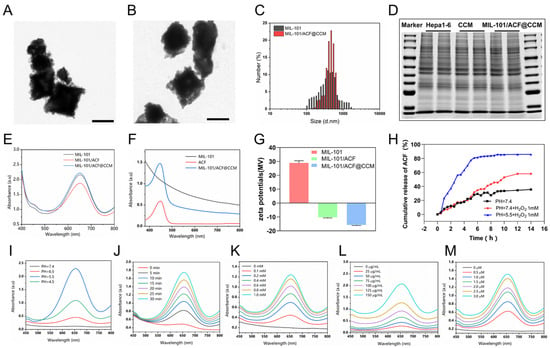Extralow-permeability reservoirs have emerged as a significant area of focus for CO
2 geological sequestration due to their stable subterranean structure and expansive storage capacity, offering substantial potential in addressing global climate change. However, the full extent of CO
2 geological sequestration potential
[...] Read more.
Extralow-permeability reservoirs have emerged as a significant area of focus for CO
2 geological sequestration due to their stable subterranean structure and expansive storage capacity, offering substantial potential in addressing global climate change. However, the full extent of CO
2 geological sequestration potential within these extralow-permeability reservoirs remains largely unexplored. To address this gap, this paper utilizes the Shahejie Formation (Es1 member) of the Shuang 229 block in the Liaohe oilfield, Bohai Bay Basin, as a case study. This section is characterized by its abundant oil-gas reserves and serves as an exemplar for conducting experimental research on CO
2 storage within extralow-permeability reservoirs. The results demonstrate that the reservoir lithology of the Es1 member is fine sandstone and siltstone, with high compositional and structural maturity. Moreover, the average porosity is 14.8%, the average permeability is 1.48 mD, and the coefficient of variation of the reservoir is approximately 0.5, which indicates a low- to extralow-permeability homogeneous reservoir. In addition, the overburden pressure is >2.0 MPa, the fault can withstand a maximum gas column height of >200 m, and the reservoir exhibits favorable overburden and fault sealing characteristics. Notably, stepwise increasing gas injection in the Shuang 229-36-62 well reveals that the injected liquid CO
2 near the wellhead exhibits a relatively high density, close to 1.0 g/cm
3, which gradually decreases to approximately 0.78 g/cm
3 near a depth of 2000 m underground. The injected fluid changes into a supercritical state upon entering the formation, and the CO
2 injection speed is optimal, at 0.08 HCPV/a. According to these findings, it is predicted that the highest burial CO
2 volume via the injection of 1.5 HCPVs in the Wa 128 block area is 1.11 × 10
5 t/year, and the cumulative burial volume reaches approximately 2.16 × 10
6 t. This shows that the CO
2 sequestration potential of extralow-permeability reservoirs is considerable, providing confidence for similar instances worldwide.
Full article
 IJMS
IMPACT
IJMS
IMPACT Applied Sciences
IMPACT
Applied Sciences
IMPACT Sustainability
IMPACT
Sustainability
IMPACT Sensors
IMPACT
Sensors
IMPACT JCM
IMPACT
JCM
IMPACT Materials
IMPACT
Materials
IMPACT Molecules
IMPACT
Molecules
IMPACT Energies
IMPACT
Energies
IMPACT Electronics
IMPACT
Electronics
IMPACT Remote Sensing
IMPACT
Remote Sensing
IMPACT Cancers
IMPACT
Cancers
IMPACT Nutrients
IMPACT
Nutrients
IMPACT Mathematics
IMPACT
Mathematics
IMPACT Foods
IMPACT
Foods
IMPACT Buildings
IMPACT
Buildings
IMPACT Polymers
IMPACT
Polymers
IMPACT Animals
IMPACT
Animals
IMPACT Water
IMPACT
Water
IMPACT Plants
IMPACT
Plants
IMPACT Agronomy
IMPACT
Agronomy
IMPACT Biomedicines
IMPACT
Biomedicines
IMPACT Processes
IMPACT
Processes
IMPACT Microorganisms
IMPACT
Microorganisms
IMPACT Diagnostics
IMPACT
Diagnostics
IMPACT Nanomaterials
IMPACT
Nanomaterials
IMPACT Viruses
IMPACT
Viruses
IMPACT Medicina
IMPACT
Medicina
IMPACT Healthcare
IMPACT
Healthcare
IMPACT Cells
IMPACT
Cells
IMPACT Forests
IMPACT
Forests
IMPACT Agriculture
IMPACT
Agriculture
IMPACT Land
IMPACT
Land
IMPACT JMSE
IMPACT
JMSE
IMPACT IJERPH
IJERPH
 Symmetry
IMPACT
Symmetry
IMPACT Genes
IMPACT
Genes
IMPACT Pharmaceutics
IMPACT
Pharmaceutics
IMPACT Coatings
IMPACT
Coatings
IMPACT Micromachines
IMPACT
Micromachines
IMPACT Pharmaceuticals
IMPACT
Pharmaceuticals
IMPACT Atmosphere
IMPACT
Atmosphere
IMPACT Children
IMPACT
Children
IMPACT Religions
IMPACT
Religions
IMPACT Antioxidants
IMPACT
Antioxidants
IMPACT Life
IMPACT
Life
IMPACT Metals
IMPACT
Metals
IMPACT Biomolecules
IMPACT
Biomolecules
IMPACT Vaccines
IMPACT
Vaccines
IMPACT Education Sciences
IMPACT
Education Sciences
IMPACT Minerals
IMPACT
Minerals
IMPACT Horticulturae
IMPACT
Horticulturae
IMPACT Brain Sciences
IMPACT
Brain Sciences
IMPACT JPM
IMPACT
JPM
IMPACT Bioengineering
IMPACT
Bioengineering
IMPACT
















